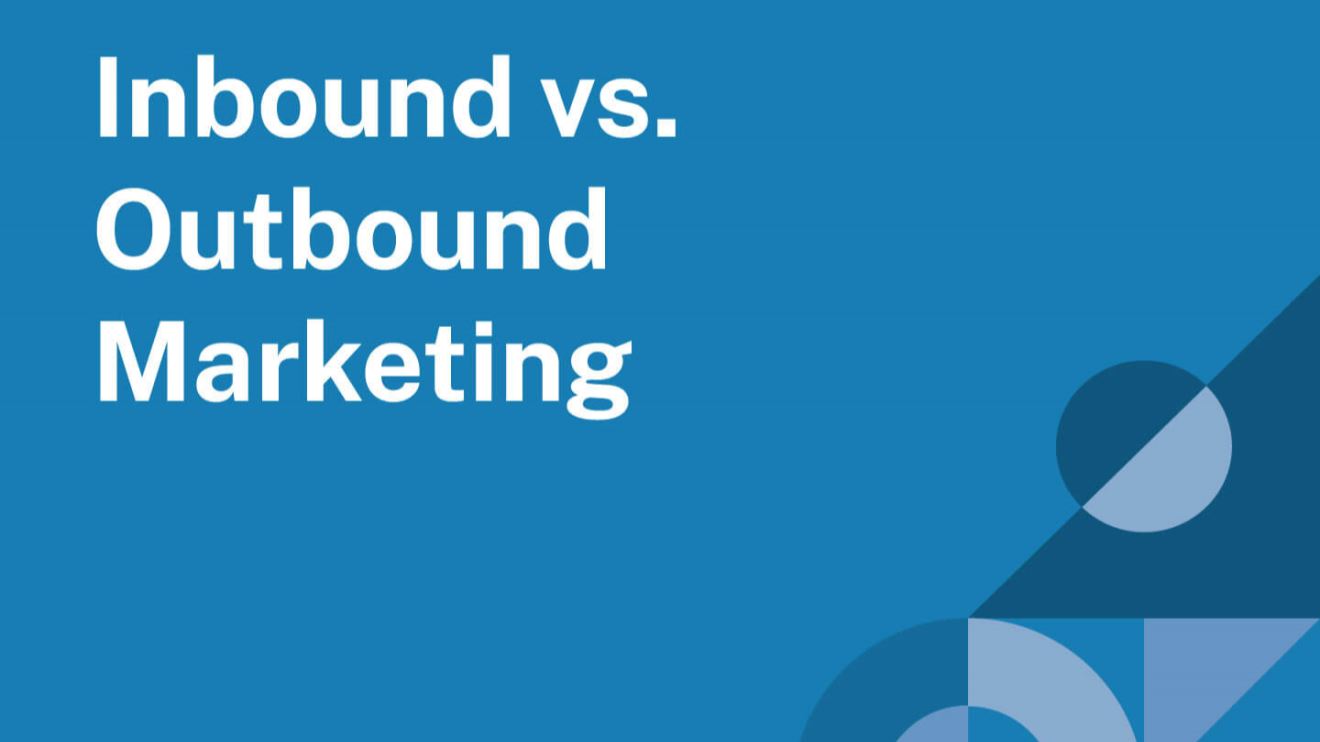When I compare inbound marketing vs. outbound marketing, I wonder why we relied on outbound for so long.
Imagine a world where you never received another robocall. No annoying emails that you didn’t ask for. An end to the era of cold calling. What would life be like with no direct marketing clogging up your mailbox?
That world is not like ours’. But these days, we predict that inbound marketing will replace all these impersonal digital marketing campaigns. More than replace, it’ll eliminate them.
Why? Because inbound leads are more affordable than outbound leads by 61%. Plus, these leads actually earn more conversions, according to MIT and HubSpot. By conversions, we mean the goal you want people to achieve on your website.
In this article, we’re breaking down inbound vs outbound. I’ve already written about what inbound marketing is. So if you want a refresher, check that out.
But this time, I’ll share real-world inbound marketing examples that we’ve created. We’ll also show how inbound marketing leads are cheaper and more valuable than outbound leads. And most of all, we’ll show how website sales actually outperform leads gained through outbound tactics.
Inbound Vs Outbound - A Brief History
Inbound strategy represents a fundamental shift in marketing approach.
In the past, old-school advertising tactics meant getting your message in front of the consumer as much as possible. Doesn’t matter if it’s repetitive or annoying. Outbound marketers are more interested in being seen than being heard or believed.
Their goal is to move customers through the sales funnel as fast as possible. I can’t think of a better example than the HeadOn tv ads that ran when I was a kid. Remember this?
That’s…the worst, in my book. It’s even more annoying when you remember they used to run these tv commercials back-to-back.
So HeadOn is what you’re trying to avoid. But what does a really good inbound strategy look like?
How Inbound Marketing Works
The inbound approach is simple in theory. Here’s the idea.
Rather than pushing advertising messages onto consumers, inbound “pulls” potential customers by giving them the information they’re searching for in an engaging way. Now, you’re not annoying, you’re helping.
You want to be the company that provides this useful information, because you become the source of authority in the mind of the consumer. And now, it’s a one-on-one conversation, not the same message you pushed on thousands of other people.
So really, you’re still using the sales funnel, you’re just delivering information in different ways. And now, inbound marketing agencies like BrandExtract call this the buyers’ journey.
 The goal is to make great content for every stage of the buyers’ journey. And generate a ton of leads for the sales team.
The goal is to make great content for every stage of the buyers’ journey. And generate a ton of leads for the sales team.
After getting two or three pieces of valuable content, they learn more about your company. As that happens, the potential customer is much more likely to buy from you, or promote your services.
Basically, you’re using different types of content for different stages of the buyers’ journey. Clear as mud? Here’s a high level inbound example.
Inbound Marketing Example
Say your home has wood floors. Whatever you do, you can’t seem to get a deep scratch out. So what do you do?
- You ask the search engines how to “remove scratches from wood”. You find a blog with the perfect tip and it works.
- A couple weeks later, you realize your floor also has dents and dings, so you ask search engines how to fix those.
- Again, you find another useful blog that solves your problem. But wait – that’s the same blog as last time. This company is pretty helpful.
- Before leaving the blog, you sign up for notifications for new blog posts, so you can get more helpful tips.
- One month later, you get a notification of a blog, and visit the website.
- But this time, you see an offer for a free floor restoration inspection and cleaning kit. All you have to do is give a phone number, and they’ll set it up.
 You get a free cleaning kit and floor inspection. And that company gets an inbound lead. And the moment you shared your information, you moved further in the buyers’ journey. You’re no longer in the “awareness” category. You’ve graduated to the “consideration” category now.
You get a free cleaning kit and floor inspection. And that company gets an inbound lead. And the moment you shared your information, you moved further in the buyers’ journey. You’re no longer in the “awareness” category. You’ve graduated to the “consideration” category now.
If we take a step back, we see this is a much better customer experience. You’re not seeing ads for wood floors on tv, you’re seeing home improvement tips only when you’re open to hearing that message.
And once you’re “considering” the company’s services, you’re more willing to receive exclusive email offers from sales reps, or other free resources, like cleaning guides or free cleaning kits. This is where email marketing really pays off. Email is well suited for building relationships with engaged leads.
At the end of the day, you’re using the same tools as traditional advertising. You’re still promoting your products and services. But how you deliver them is different.
Now, you’re not interrupting people’s day. You’re creating useful content, the kind that people search for.
Useful content that people share, like white papers, quizzes, online estimating tools, how to guides and more.
These kind of content marketing strategies are what stick in the mind of consumers.
Inbound Vs Outbound Marketing Sales
So, when it comes to inbound sales vs outbound sales, there’s a clear winner. The stats speak for themselves.

49.7% of companies using inbound marketing increase sales within 7 months.
92.7% of companies using inbound increase their lead generation.
42.2% of companies using inbound methodologies increase their lead-to-sale conversion rate for
92.34% of companies using inbound tactics increase their traffic.
By this point, you have a good understanding of inbound vs outbound and its benefits. The next step is a simple one – see these inbound results in action.
Luckily, we made a case study showing how we increased lead generation, sales and brand awareness with inbound marketing for a B2B company. Dive into the data-rich case study here.
Unlock the Power of Inbound Marketing
Download our free "Inbound Marketing Guide" and receive comprehensive step-by-step tips on how to build your own inbound marketing program.




